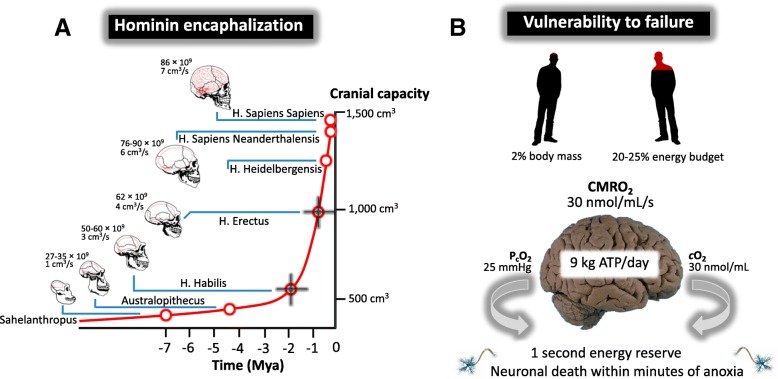Fig. 2.
Evolution of the hominin brain and vulnerability to failure. a Exponential increase in cranial capacity observed in fossil hominids over time beginning with Homo Habilis and marked encaphalization linked to the physically active “Hunter Gatherer”, Homo Erectus (annotated). Data based on the (calculated) mean of published individual data points (Schoenemann 2006). Note also the increase in total number of neurones estimated from separate derivations of cranial capacity and corresponding increases in cerebral blood flow calculated from the size of the internal carotid foramina, in relation to endocranial volume (Seymour et al. 2016). b The human brain’s oxygen (O2) dependence comes at a cost with a corresponding high vulnerability to failure given that it is an entirely aerobic organ characterized by limited energy reserves that becomes evident when confronted by complete oxygen lack (anoxia). CMRO2, cerebral metabolic rate of oxygen; PcO2 (average) cerebral tissue partial pressure of O2; cO2, cerebral oxygen content

